Bao Buns – Recipe, origin and preparation tips
Whether at street food markets, trendy restaurants like our Fusion Restaurant in Berlin Mitte or in your own kitchen – bao buns are no longer a hidden gem. These fluffy, steamed buns captivate with their versatility and can be filled with all kinds of ingredients. But what exactly are bao buns? And how do you make them at home? Straight from our Asian Fine Dining kitchen, we’re sharing our go-to bao bun recipe – for delicious creations and unique flavor experiences!
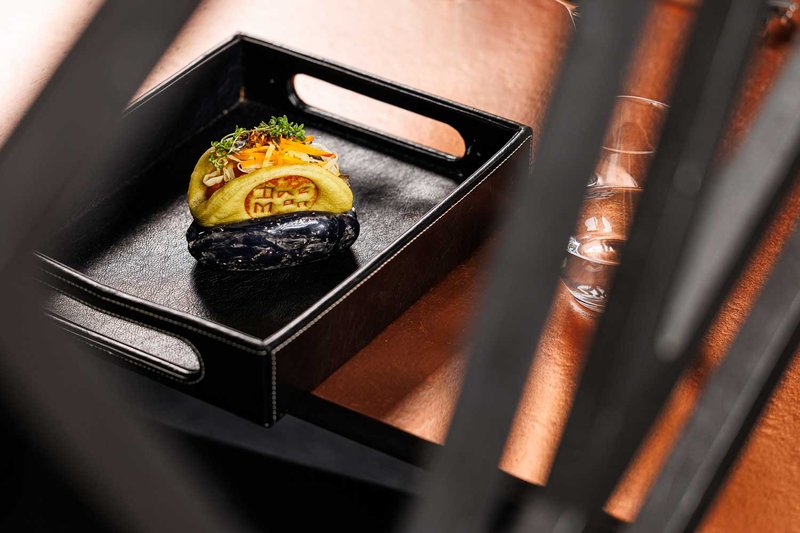
What are Bao Buns?
Bao buns are soft, Asian-style dough pockets that are traditionally steamed rather than baked. This method, using a steamer or bamboo basket, gives the buns their signature pillowy texture. The name comes from the Chinese word baozi , meaning “steamed filled buns” – a nod to their wide-ranging culinary uses.
Folded or filled – the many faces of Bao Buns
Bao buns vary not only in preparation but also in form. While some versions are round and fully encase the filling, the classic bao bun is folded into a half-moon shape – creating a small pocket perfect for post-steam stuffing. Whether filled with tender pork belly, savory shiitake mushrooms, or crisp cucumber, the creative possibilities are endless.
Bao Bun origins in Asia
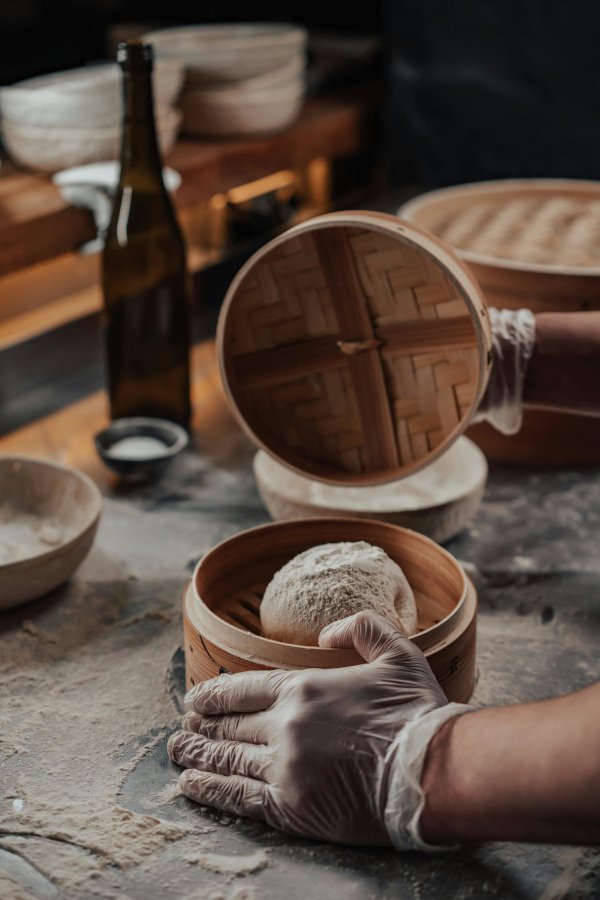
Bao buns originated in China and have been a traditional dish for centuries, dating back to the Three Kingdoms period (220–280 AD). Warriors reportedly favored them as a practical, nourishing meal.
A well-known variation is the Taiwanese “gua bao,” typically filled with juicy pork belly, pickled cucumbers, cilantro, and soy sauce – now a global street food staple. In Japan, they’re called nikuman , and in Korea, hoppang – usually round buns with sweet or savory fillings.
Today, bao buns have made their mark beyond Asia. Whether as a burger bun alternative, fancy finger food, or a main dish with bold fillings, they’re a culinary highlight – from fine dining to food trucks.
Recipe: filled Bao Buns
with Shiitake, Gochujang & Fermented Cabbage
This recipe combines savory shiitake mushrooms with spicy gochujang marinade and tangy fermented cabbage – a bold balance of umami flavors. Classic pork belly versions or creative variations with chicken or beef are also great. For a fresh twist, try adding ginger, lime juice, scallions, and a dash of pepper.
Ingredients (for about 20 buns)
Fermented Cabbage
- 200 g pointed cabbage
- 500 ml water
- 20 g salt
Shiitake Filling
- 400 g fresh shiitake mushrooms
- Oil for frying
Bao Bun Dough
- 240 g warm milk
- 150 g warm water
- 110 g sugar
- 10 g dry yeast (or 25 g fresh yeast)
- 630 g flour
- 4 g salt
- 10 g baking powder
- 60 g neutral oil (+ extra for brushing)
Gochujang Marinade
- 20 g sugar
- 90 g soy sauce
- 70 g gochujang paste
- 7 g garlic
- 20 g sesame oil
Preparation – In 5 easy steps
Step 1: Prepare the fermented cabbage
Ingredients :
- 200 g pointed cabbage
- 500 ml water
- 20 g salt
Preparation:
Slice the cabbage into thin strips. Combine with salt water in a bowl. Let ferment in the fridge for 4–5 days.
Step 2: Make the Bao Buns
Ingredients:
- 240 g warm milk
- 150 g warm water
- 110 g sugar
- 10 g dry yeast (or 25 g fresh yeast)
- 630 g flour
- 4 g salt
- 10 g baking powder
- 60 g neutral oil (+ extra for brushing)
Preparation:
Mix milk, water, sugar, and yeast. Let sit for 5–10 minutes until bubbly.
Add flour, salt, baking powder, and oil. Knead for 10 minutes until smooth and elastic.
Brush dough lightly with oil, cover, and let rise until doubled in size.
Roll out the dough to about 5 mm thickness. Cut into circles.
Brush with oil, fold in half, place on parchment, and let rise for another 30–45 minutes.
Steam for 15 minutes until soft and fluffy.
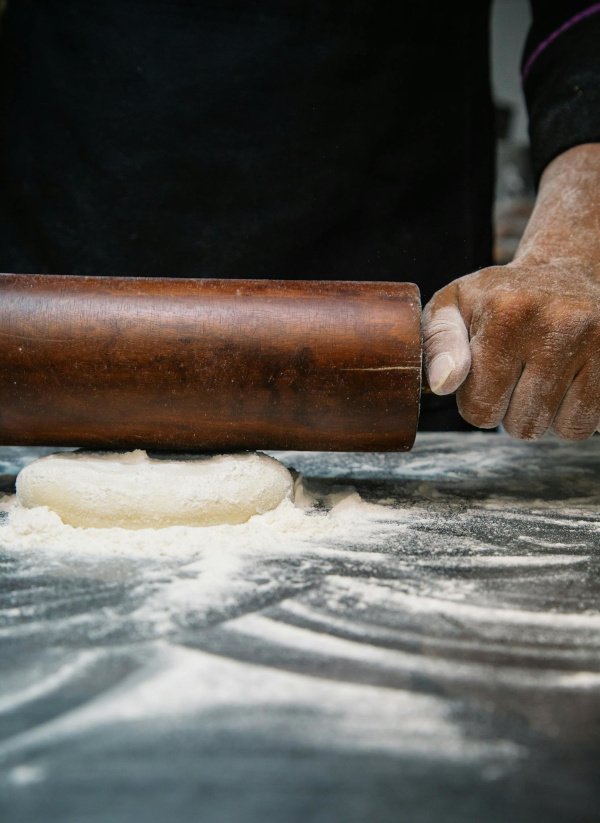
Step 3: Make the Gochujang Marinade
Ingredients:
- 20 g sugar
- 90 g soy sauce
- 70 g gochujang paste
- 7 g garlic
- 20 g sesame oil
Preparation:
Mix all marinade ingredients in a bowl until smooth.
Step 4: Roast the Shiitake mushrooms
Ingredients:
- 400 g fresh shiitake mushrooms
- Oil for frying
Preparation:
Slice mushrooms thinly.
Sauté in hot oil, then stir in the marinade.
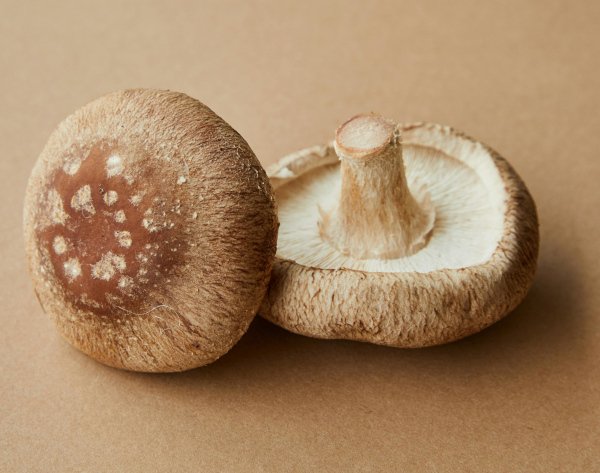
Step 5: Assemble the Bao Buns
1. Gently open the warm buns.
2. Fill with marinated mushrooms and fermented cabbage.
3. Top with scallions, sesame seeds, lime juice, chili, or extra soy sauce.
Optional: Swap mushrooms for tofu or other vegetables for a plant-based version.
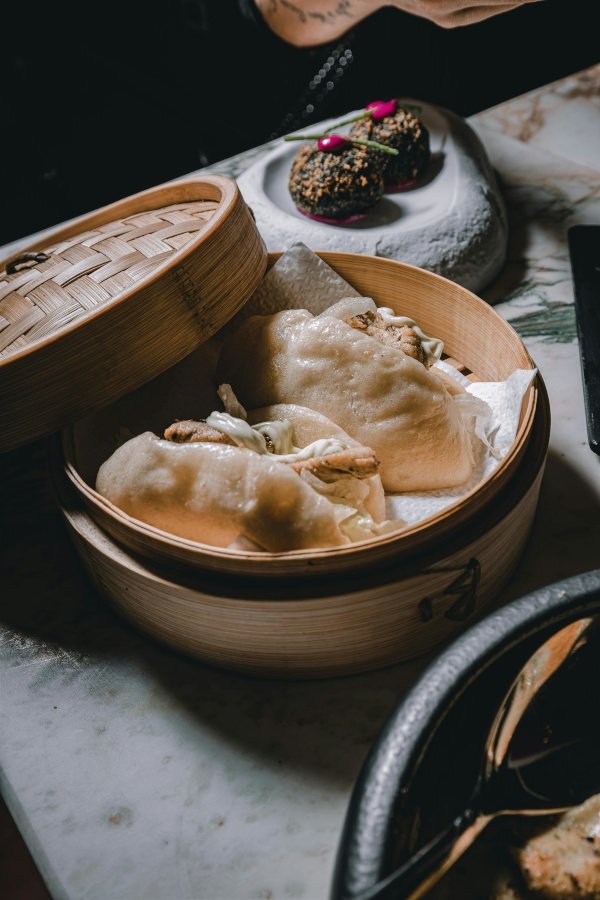
Tips on choosing ingredients
The dough – Fluffy and light
- Use a fine wheat flour (Type 405 or 550) for a smooth texture.
- Dry or fresh yeast can both work – activate with warm liquid.
- Fine sugar dissolves better for even flavor.
- Salt must not come into direct contact with yeast – mix in last.
- Neutral oil keeps the dough tender and moist.
- For extra softness and subtle sweetness, substitute part of the water with coconut milk.
The filling – Quality meets balance
- Fresh shiitake mushrooms offer deep umami; avoid soggy or shriveled ones.
- Can’t find shiitake? Try king oyster or portobello mushrooms.
- Use a quality gochujang paste – vibrant, thick, with minimal additives.
- High-quality, naturally brewed soy sauce brings deeper flavor.
- Toasted sesame oil adds nutty aroma – go for 100% pure.
The fermented cabbage – A tangy counterpoint
- Brings brightness and crunch to the dish.
- Use sea salt with no additives to aid fermentation.
- Cut cabbage finely for even salting and fermenting.
With the right ingredients and a little patience, this bao bun recipe delivers an authentic, aromatic, and truly flavorful Asian experience!